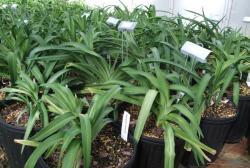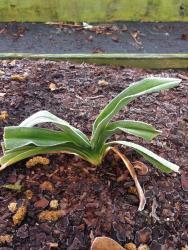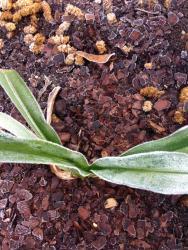Maurice ask these questions in a Tree Mail I though we would share it here.
I'm trying to understand what dormancy really means in daylilies and any help you can provide will be very useful.
#1-When one of your daylilies has leaves a few inches above the soil surface during winter (say a semi-evergreen) have you noticed what happens to those leaves in the spring when the plant starts to grow?
#2-Do they grow to normal size or do they stay small and not grow or do they do something intermediate? Is what happens different for different seedlings?
#3-Do any of them grow short leaves above the soil surface, then those leaves are killed by the cold and then they regrow more short leaves again?
#4-When do the short leaves first grow (the month)?
#5-What month do the plants with those short leaves during winter start to grow normal length leaves?
The information that comes from myself is by no means anything but what I have seen happen here, and could vary in other parts of the daylily world. I live in the deep south with hardly no winter, so almost anywhere else in the USA may be different.
I wish someone from the far north would chime in with the information I can't relate to because of winter conditions here, or the lack of.
What you see here are 1 Year Old sibs, one sev and one ev. The original leaves on the sev have all died except a couple, the original leaves on the ev will continued to grow all winter. In the early spring (end of Feb or early March here) those same leaves on the sev will start to grow longer and will soon look like an ev. All seedlings or registered plants will follow this type of growth here. This is the only time of the year when I can tell which ones are sev. One other important thing, if my sev plants were in north Alabama they may very well be dormants and the ev plants may be sev.
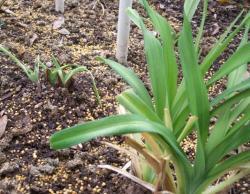
This is 2 Year Old sev, the plant is larger so the foliage (leaves) are larger
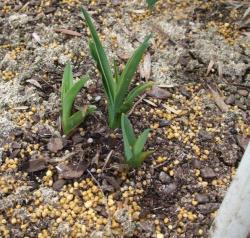
Everyone knows Emerald Starburst is dormant, here it acts like a sev.
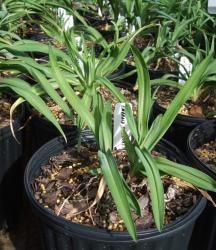
This is a group of plants that are all registered as sev, here all are ev.
The hybridizer says all are tested in the north before release and shipped from Florida
so they could all be sev in the north.
